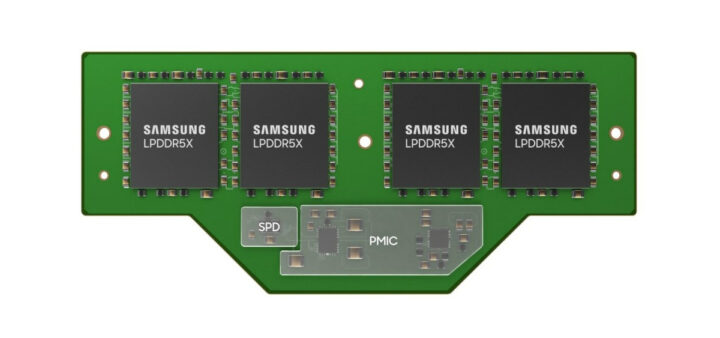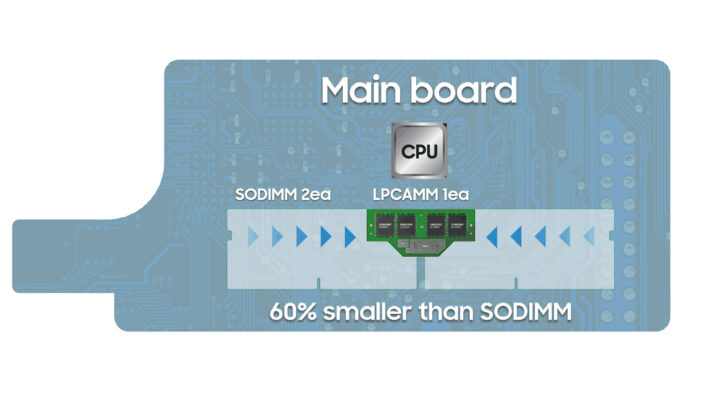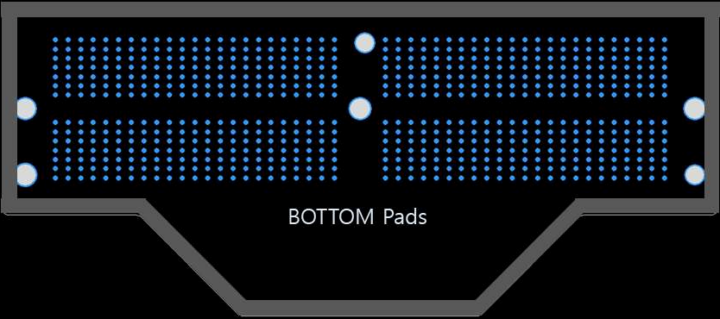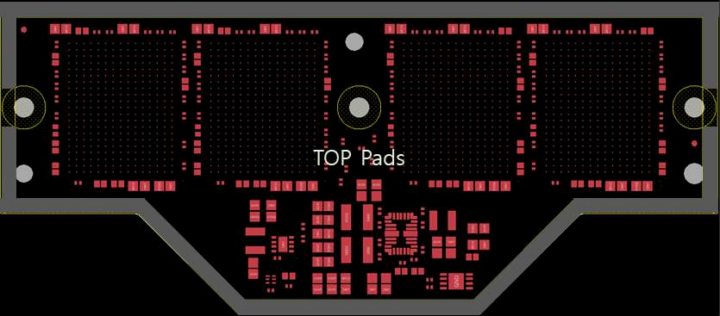Samsung has unveiled a new type of removable memory module called the LPCAMM (Low Power Compression Attached Memory Module) with LPDDR designed for PCs and laptops, and the company expects them to eventually be used in servers found in data centers. I would also not be surprised to find them in embedded systems in the future, for example in an updated COM Express standard.
Laptops typically come with either low-power DDR (LPDDR) soldered to the motherboard or SO-DIMM modules with DDR memory chips, but there weren’t any removable modules with low-power memory so far, and Samsung LPCAMM changes that.
The new LPCAMM module will initially be fitted with LPDDR5X chips and deliver a 50% performance boost (up to 7500 MT/s), improve power efficiency by 70%, and reduce the mounting area by 60% (78 x 23mm) compared to SO-DIMM modules
A main factor in reducing the area required is that two SO-DIMM modules are required for dual-channel memory, but a single LPCAMM module would be needed on a motherboard that supports the new memory modules thanks notably to a 128-bit memory bus.
Anandtech obtained two diagrams of the pads from Intel that illustrate the relationship between the positioning of the LPDDR5X memory modules and the signal pads below them. This is important as LPDDR chips need short traces to the host memory controller, and that’s why they can not be used on traditional SO-DIMM modules.
So that means low-power high-performance removable LPDDR modules will soon become available to laptops and other compatible hardware platforms. We’ll still need to be patient as the first LPCAMM removable memory modules with LPDDR5X memory are expected in 2024 with capacities of up to 128 GB, and adoption of the new memory modules, if they ever gain traction, may take a while. A few more details may also be found in the press release.
Via Liliputing

Jean-Luc started CNX Software in 2010 as a part-time endeavor, before quitting his job as a software engineering manager, and starting to write daily news, and reviews full time later in 2011.
Support CNX Software! Donate via cryptocurrencies, become a Patron on Patreon, or purchase goods on Amazon or Aliexpress








